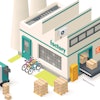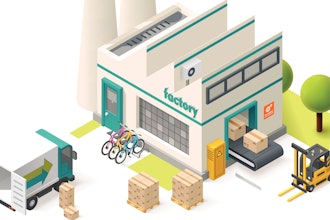BEIJING (AP) -- The slump in China's exports eased last month as industrial output and retail sales rose sharply, the government said Wednesday, showing that recovery in the world's third-largest economy was firmly on track.
Exports fell 13.8 percent in October to $110.8 billion from the same month last year, the smallest decrease in 10 months, according to government figures. Imports dropped by 6.4 percent to $86.8 billion over the same period, a slightly faster pace than in September.
Meanwhile, the key inflation rate, known as the consumer price index, was down 0.5 percent in October from the same month last year, according to the National Bureau of Statistics.
Together, the monthly figures provide the latest evidence that China's economy will meet or surpass the government's goal of 8 percent economic growth for the full year.
Statistics Bureau spokesman Sheng Laiyun said retail sales were up a robust 16.2 percent in October from the same month last year, while industrial output rose 16.1 percent.
"The October data show that we have more reasons to believe the economy will achieve the goal of 8 percent growth," Sheng told a news conference. He added there were no inflation worries at the moment.
Fixed asset investment for the first 10 months of the year surged 33.1 percent compared to the year-ago period, Sheng said.
China has rebounded faster and stronger than other major economies from the world economic crisis, with flowing government spending and bank lending pushing up economic expansion by 8.9 percent in the third quarter.
"October's figures came as no surprise. The momentum for an economic recovery carries on despite the fall of imports," said Feng Yuming, a macroeconomic analyst for Oriental Securities in Shanghai.
Feng said the further decline in imports was due to lower commodity prices.
The gush of lending has inflated China's stock and real estate markets massively this year. However, Chinese banks curtailed new loans sharply in October, by more than 50 percent to 253 billion yuan ($37 billion) compared to September, amid growing concerns the easy lending would create asset bubbles.
Companies, central bankers and political leaders around the world are increasingly counting on growing demand from Chinese producers and consumers to offset sluggish home markets. Much of China's growth is coming from government-backed spending on construction and other projects, but demand from China's traditionally frugal, still relatively poor consumers is also rising.
"The new good change in October is that the trend in the contribution of consumption to economic growth is increasing and we believe that in the fourth quarter it will increase," Sheng said.
China's economy began to falter in late 2008 as exports plunged and thousands of factories shut down, throwing millions out of jobs. China fought back with a 4 trillion yuan ($586 billion) stimulus plan involving massive spending and bank lending for construction of infrastructure such as railways and roads to pump up the domestic economy.
Growth fell to a low of 6.1 percent in the first quarter, but rebounded to 7.9 percent in the second quarter, hitting 8.9 percent in the third compared with a year earlier.
Associated Press researcher Bonnie Cao contributed to this report.






















